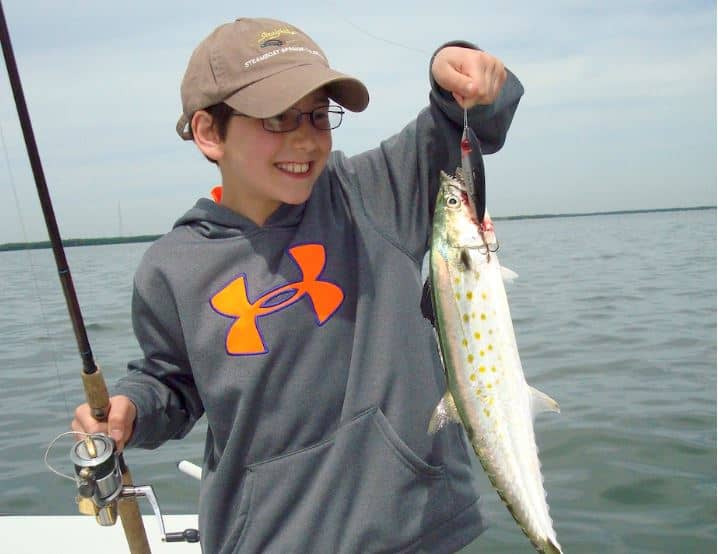August 20, 2020
By: Bill Aucoin
RUSKIN, Fla.- Welcome to Angler Insider sharing the best spots and plots to catch fresh and saltwater gamefish each week in Central Florida.

The Brief
- Weather: Hot. Humid. Thunderstorms. Track tropical storms.
- Tidal flows strong following new moon Aug 18
- Revive fish before releasing them
- Release all snook, redfish, and spotted seatrout south of Hernando/Pasco line.
- Keep up to five mangrove snappers 10 inches or longer.
- Keep up to five bass but only one 16 inches or longer.
- Keep up to 50 panfish of any length.
- Keep up to 25 crappie (speckled perch) per person.
- Keep up to 10 flounders 12 inches or more. October: changes to 5 fish, minimum 14 inches.
- Keep up to 3 Spanish mackerel of 12 inches or longer.
- Covid-19: Keep distance, wash hands, don’t share lures.
Saltwater
Nearshore Gulf shorelines are jammed with baitfish. Fast moving schools of Spanish mackerel and jack crevalle are erupting on the surface, especially near bridges and fishing piers. Cast noisy topwater lures with a strong leader. If the surface commotion stops jig a little spoon vertically but get ready for the next feeding frenzy.
For a change of pace, bump a white jig on hard, sandy bottoms for flounder. Woohoo, we can keep flounder. Grass flats are still delivering the big three — snook, redfish, seatrout – but not always on the same tide. You’ll have to ask them.
Freshwater
Swollen lake levels are bringing new shorelines into play for bass and bream. Focus on areas where rivers, creeks, and rain drains deliver water to the lake. A weedless plastic worm is the best all-around lure. Guides will teach you to pitch it into a clump of cattails or buggy whips, placing in the center of the “V”-trap. Lunkers are on the bottom nosed into the “V”.
Bluegills are also on shorelines. The fastest way to find them is with a fly rod casting a silly leg cricket. When the shoreline bite stops, go deeper. Big bass are hiding under hydrilla. Schoolies are facing into moving water between connected lakes and downstream from locks and spillways.
To check the weather radar and forecast, please click here.
Publishers Note: While The Free Press will always be free for our readers, and ad-supported, we are asking our loyal readers to consider a monthly donation of $3 to maintain our local journalism and help us grow, as we ramp up ad sales locally.
You can click here to support us.
We thank you all for your consideration and supporting local journalism.

